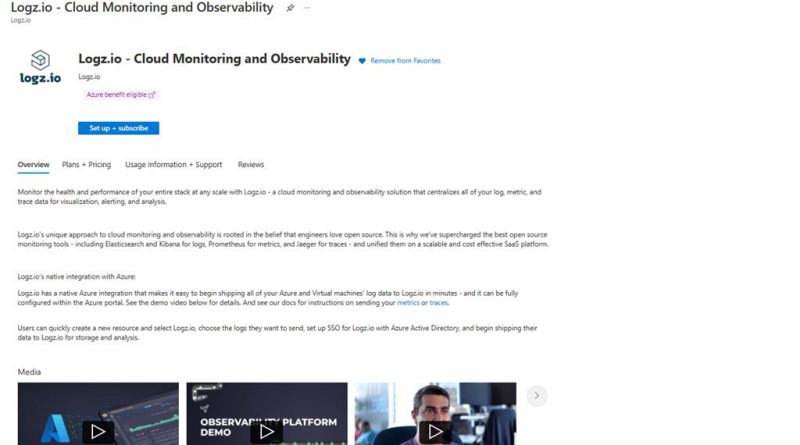Seamless integration of Logz.io observability platform with Microsoft Azure
When your solution is operating at cloud speed and scale you need to be able to spot problems as they arise (ideally before they impact the customer), respond quickly and resolve them as quickly as possible. If you are building and have cloud-native applications in form of microservices, serverless, and container technologies, tracing an event to its origin, and identifying the root cause is not trivial.
Observability solutions allow you to monitor modern systems more effectively and help you find and connect effects in a complex chain and trace them back to their cause. It gives your DevOps, site reliability engineers (SREs), and developers visibility into the entire architecture. Observability solutions achieve this by collecting logs, metrics, and traces, and using machine learning to extract insights.
At Microsoft, in addition to providing native observability solutions such as Azure Monitor, we work closely with the open-source community and partners to provide popular observability solutions for you to choose the observability solution of your choice.
We have partnered with Logz.io to build Logz.io for Microsoft Azure which makes it easy to ship your log data to Logz.io in minutes without deploying any new code. From within Azure, you can deploy Logz.io resources and choose which logs they want to send to Logz.io for storage and analysis. This includes activity logs, data from multiple Azure resources, and log files from virtual machines. Before the integration, Logz.io customers were expected to instantiate EventHub in their subscription and use Azure functions to send data from Azure resources to the Logz.io account.
Logz.io provides a cloud-native observability platform that centralizes log, metric, and tracing analytics in one place, so you can monitor the health and performance of your Azure environment. It uses open source monitoring tools including ELK, Prometheus, and Jaeger—and unifies them into a scalable observability platform.
“Our partnership with Logz.io will accelerate innovation within the engineering community, enabling teams to seamlessly launch Logz.io observability tools, and rapidly build and monitor their products, while providing customers with a centralized portal management for billing and support for their Azure Deployments.”—Julia Liuson, President, Microsoft Developer Division
“This partnership represents a massive opportunity for engineering and DevOps teams to build and optimize their mission-critical applications using the open-source tools they love,” said Tomer Levy, Founder and CEO at Logz.io. “By creating a seamless, low friction way to utilize Logz.io in the Azure environment and streamline the entire process, we believe that this native integration, offered through Azure Marketplace will become a de facto resource for many new and existing customers.”
With Logz.io for Azure’s unified experience, you will be able to:
- Provision a new Logz.io account from Azure client interfaces like Azure Portal Azure PowerShell and SDK.
- Streamline single-sign on (SSO) to Logz.io—a separate sign-on from the Logz.io portal is no longer required.
- Configure their Azure resources to send logs to Logz.io—a fully managed setup with no infrastructure for customers to setup and operate.
- Seamlessly send logs and metrics to Logz.io. Today, customers must set up event hubs and write Azure Functions to receive logs from Azure Monitor and send them to Logz.io.
- Easily install the Logz.io agent on virtual machines hosts through a single-click.
- Get unified billing of Logz.io SaaS through Azure subscription invoicing.
Next steps
- Try out this new service, “Logz.io for Azure” via the Azure Marketplace.
- Learn more about Logz.io for Azure.
Source: Azure Blog Feed





